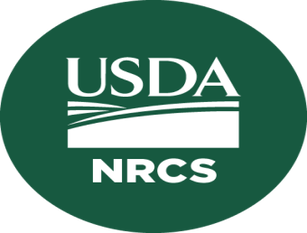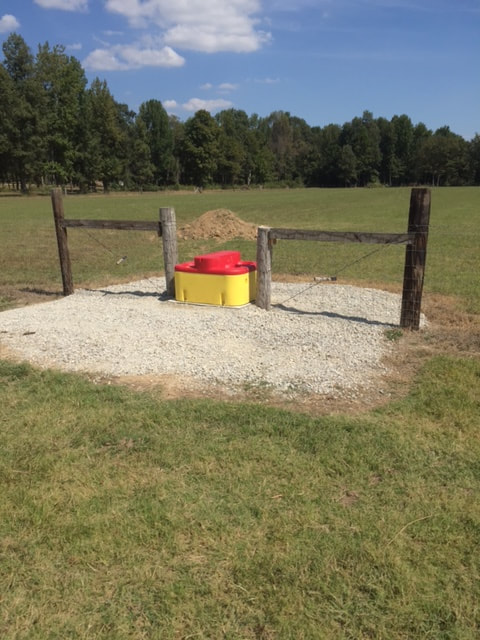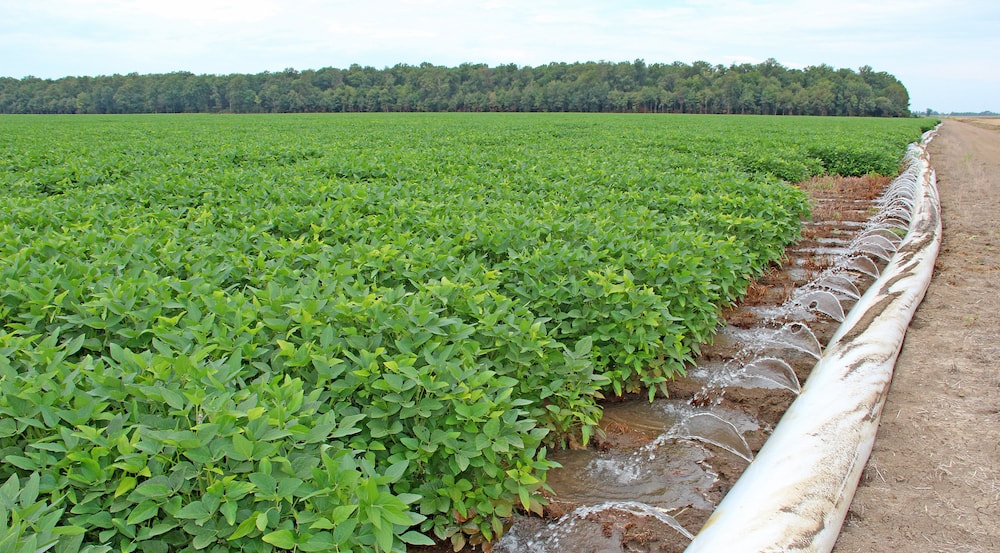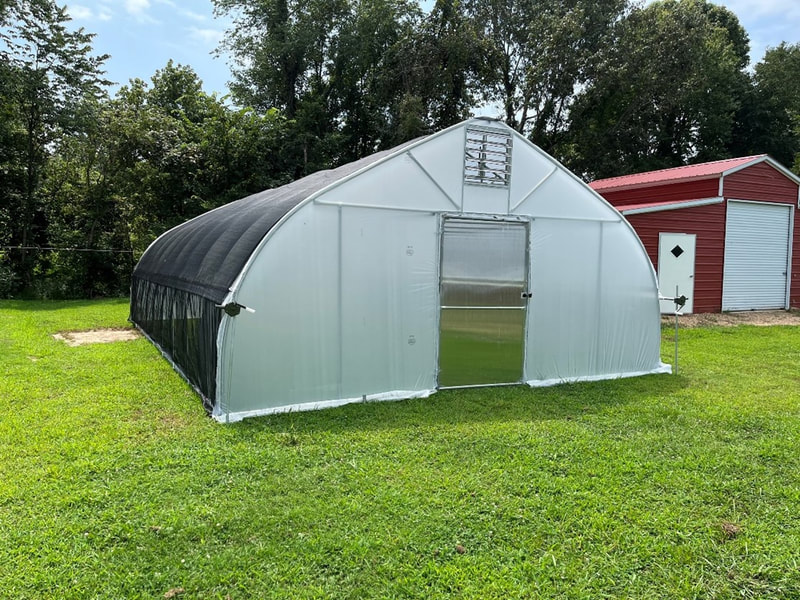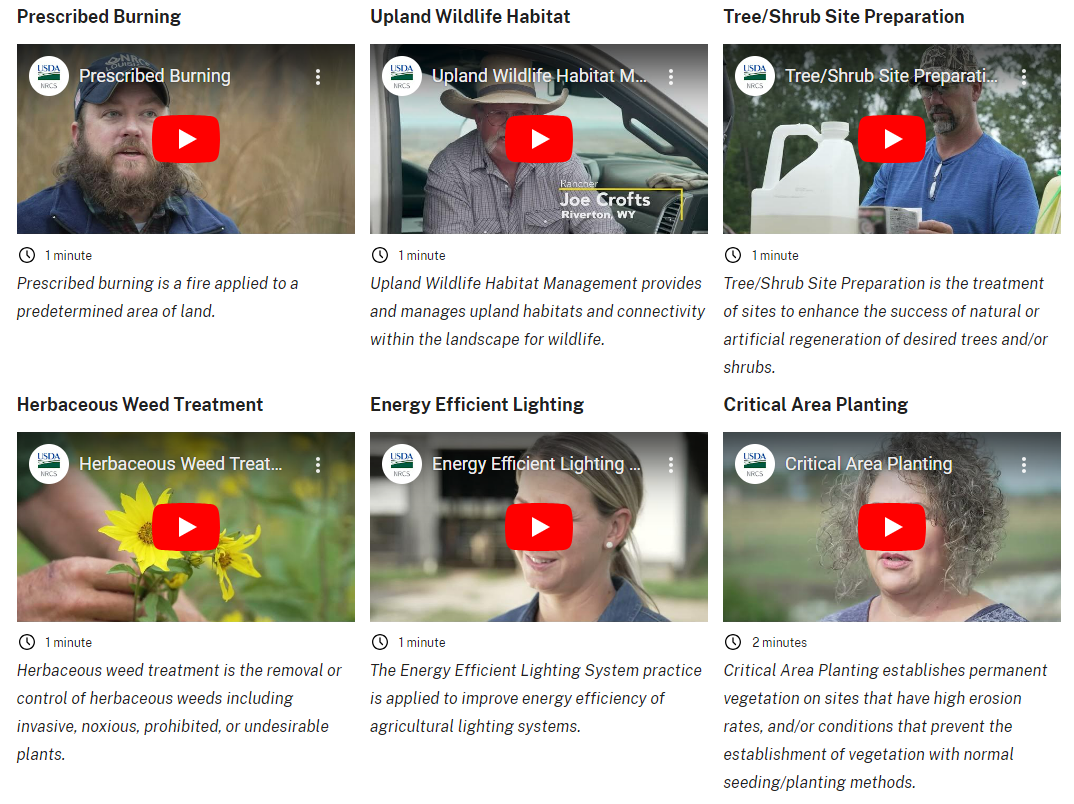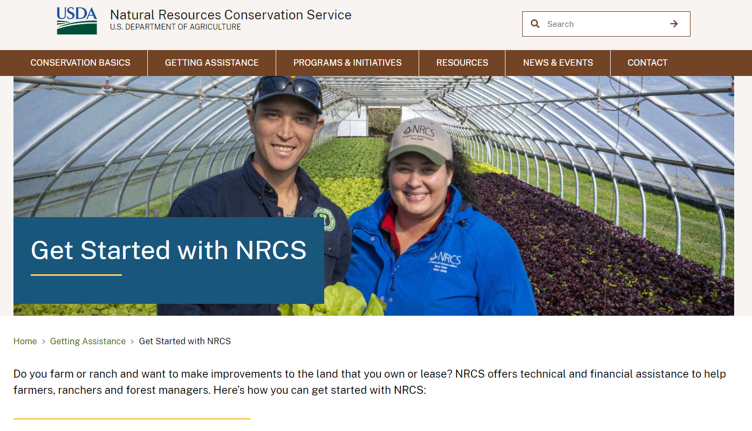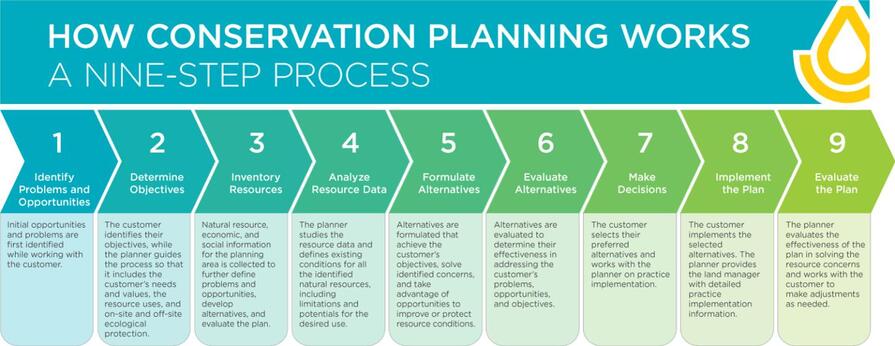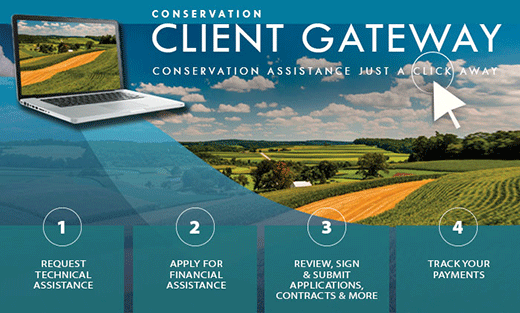Greene County Staff
District Conservationist: Adam Eades
Soil Conservationists: Trevor Grubb and Rob Quakenbush
Program Support Specialist: Brandie Teel
Soil Con Tech: William Young
Civil Engineer: David Akins
Soil Conservationists: Trevor Grubb and Rob Quakenbush
Program Support Specialist: Brandie Teel
Soil Con Tech: William Young
Civil Engineer: David Akins
NRCS Programs
Environmental Quality Incentives Program (EQIP)
NRCS works one-on-one with producers to develop a conservation plan that outlines conservation practices and activities to help solve on-farm resource issues. Producers implement practices and activities in their conservation plan that can lead to cleaner water and air, healthier soil and better wildlife habitat, all while improving their agricultural operations. EQIP helps producers make conservation work for them. Financial assistance for practices may be available through EQIP. Some producers may also qualify for advance payment.
EQIP provides technical and financial assistance to agricultural producers and forest landowners to address natural resource concerns, such as:
How to Get Started:
The first step is to contact your local NRCS office. An NRCS conservation planner will schedule a visit to your property. They will walk the land with you to discuss your goals and review any resource concerns. Following the site visit, the conservation planner will develop a conservation plan that includes a variety of conservation practices or activities to address the resource concerns and management goals discussed.
Applications for NRCS conservation programs are accepted on a continuous basis; however, customers should apply by state-specific ranking dates to be considered for the current funding cycle.
To learn more about EQIP, contact your local NRCS office.
NRCS works one-on-one with producers to develop a conservation plan that outlines conservation practices and activities to help solve on-farm resource issues. Producers implement practices and activities in their conservation plan that can lead to cleaner water and air, healthier soil and better wildlife habitat, all while improving their agricultural operations. EQIP helps producers make conservation work for them. Financial assistance for practices may be available through EQIP. Some producers may also qualify for advance payment.
EQIP provides technical and financial assistance to agricultural producers and forest landowners to address natural resource concerns, such as:
- Improved water and air quality
- Conserved ground and surface water
- Increased soil health
- Reduced soil erosion and sedimentation
- Improved or created wildlife habitat;
- Mitigation against drought and increasing weather volatility
How to Get Started:
The first step is to contact your local NRCS office. An NRCS conservation planner will schedule a visit to your property. They will walk the land with you to discuss your goals and review any resource concerns. Following the site visit, the conservation planner will develop a conservation plan that includes a variety of conservation practices or activities to address the resource concerns and management goals discussed.
Applications for NRCS conservation programs are accepted on a continuous basis; however, customers should apply by state-specific ranking dates to be considered for the current funding cycle.
To learn more about EQIP, contact your local NRCS office.
Conservation Stewardship Program (CSP)
If you are already taking steps to improve the condition of the land, chances are, CSP can help you find new ways to meet your goals.
NRCS works one-on-one with producers to develop a conservation plan that outlines and enhances existing efforts, using new conservation practices or activities, based on management objectives for your operation. Producers implement practices and activities in their conservation plan that expands on the benefits of cleaner water and air, healthier soil and better wildlife habitat, all while improving their agricultural operations.
For example, if you have been planting a cover crop, you may decide to try an enhancement for a multi-species cover crop or implement a deep-rooted cover crop to break up soil compaction and further improve the health of your soil.
CSP offers annual payments for implementing these practices on your land and operating and maintaining existing conservation efforts. Want to take it a step further? CSP also offers bundles where you can select a suite of enhancements and receive a higher payment rate.
If you are already taking steps to improve the condition of the land, chances are, CSP can help you find new ways to meet your goals.
NRCS works one-on-one with producers to develop a conservation plan that outlines and enhances existing efforts, using new conservation practices or activities, based on management objectives for your operation. Producers implement practices and activities in their conservation plan that expands on the benefits of cleaner water and air, healthier soil and better wildlife habitat, all while improving their agricultural operations.
For example, if you have been planting a cover crop, you may decide to try an enhancement for a multi-species cover crop or implement a deep-rooted cover crop to break up soil compaction and further improve the health of your soil.
CSP offers annual payments for implementing these practices on your land and operating and maintaining existing conservation efforts. Want to take it a step further? CSP also offers bundles where you can select a suite of enhancements and receive a higher payment rate.
Conservation at Work Series
Watch how farmers and ranchers across the country are implementing EQIP practices and other conservation activities in our Conservation at Work video series. For example, see how producers are using the nutrient management conservation practice to improve water quality by more effectively using nutrients.
Watch how farmers and ranchers across the country are implementing EQIP practices and other conservation activities in our Conservation at Work video series. For example, see how producers are using the nutrient management conservation practice to improve water quality by more effectively using nutrients.
Getting Started with NRCS:
Visit the NRCS website at: https://www.nrcs.usda.gov/getting-assistance/get-started-with-nrcs to learn more!
| getting_started_with_nrcs.pptx | |
| File Size: | 7192 kb |
| File Type: | pptx |
Earth Team Volunteers
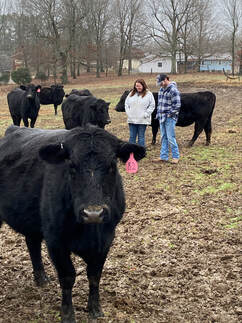 Earth Team Volunteer and Soil Conservationist looking at cattle while on a field visit.
Earth Team Volunteer and Soil Conservationist looking at cattle while on a field visit.
Volunteering has always been a cornerstone of America’s soil and water conservation movement. It formally began in the 1930s with the organization of local conservation districts. Then, as now, people volunteered their time and talent as district supervisors to assist the Natural Resources Conservation Service (NRCS) in getting conservation practices on the land. In expanding the volunteer concept, Congress passed legislation in 1981 which allowed NRCS to use volunteers in all of its programs.
In 1986, the National Volunteer Program became known as the “Earth Team”, the volunteer arm of the Natural Resources Conservation Service. The primary purpose of the Earth Team is, and always has been, to expand the NRCS services by using volunteer time, talent, and energy to help meet agency needs.
The Earth Team is now an organized and recognized part of NRCS's operations. NRCS employees at the national, regional, state, and local level recruit and utilize volunteers for a wide variety of activities.
As it was in the beginning, the Earth Team is looking for volunteers who have an interest in conserving natural resources. Who can volunteer? Anyone 14 years of age or older and interested in conserving our precious natural resources can be an Earth Team volunteer. You can volunteer part-time or full-time and work outdoors or in a local NRCS office. You can volunteer as an individual or form or join a group. For more information on becoming an Earth Team volunteer call us at 870-236-2446 Extension 3, or fill out the application below and bring it to the office.
In 1986, the National Volunteer Program became known as the “Earth Team”, the volunteer arm of the Natural Resources Conservation Service. The primary purpose of the Earth Team is, and always has been, to expand the NRCS services by using volunteer time, talent, and energy to help meet agency needs.
The Earth Team is now an organized and recognized part of NRCS's operations. NRCS employees at the national, regional, state, and local level recruit and utilize volunteers for a wide variety of activities.
As it was in the beginning, the Earth Team is looking for volunteers who have an interest in conserving natural resources. Who can volunteer? Anyone 14 years of age or older and interested in conserving our precious natural resources can be an Earth Team volunteer. You can volunteer part-time or full-time and work outdoors or in a local NRCS office. You can volunteer as an individual or form or join a group. For more information on becoming an Earth Team volunteer call us at 870-236-2446 Extension 3, or fill out the application below and bring it to the office.
| fillable_of301a_form-earthteam.pdf | |
| File Size: | 49 kb |
| File Type: | |
Conservation Client Gateway
offers a new way to interact with NRCS
Do you farm or ranch and want to make improvements to the land that you own or lease? NRCS offers technical and financial assistance to help farmers, ranchers and forest landowners. Click on the link below or watch the YouTube video for information on how you can get started with NRCS:
http://www.nrcs.usda.gov/wps/portal/nrcs/detail/national/
about/?cid=stelprdb1193811
http://www.nrcs.usda.gov/wps/portal/nrcs/detail/national/
about/?cid=stelprdb1193811

